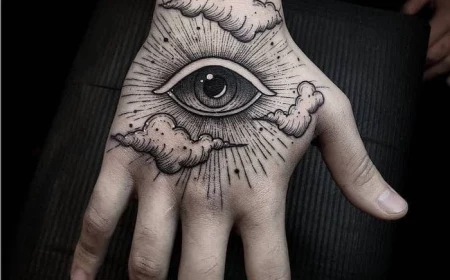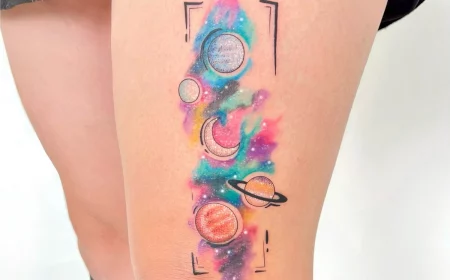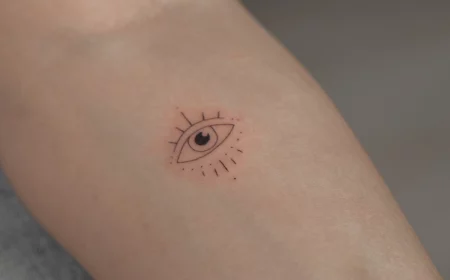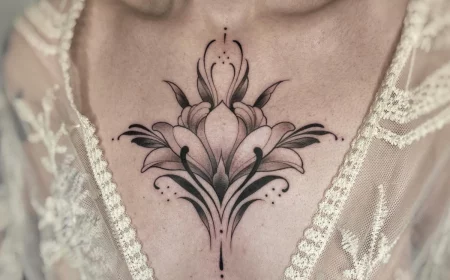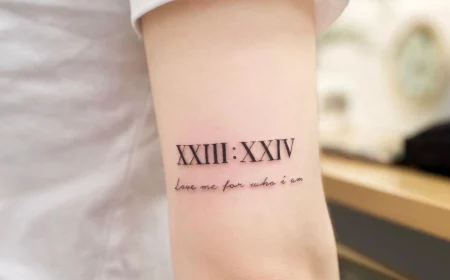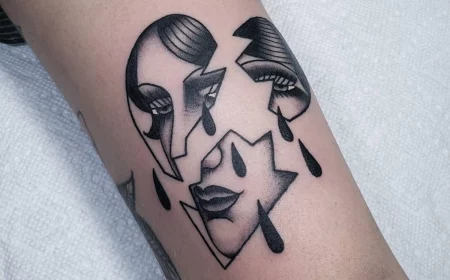Thinking About a Hand Tattoo? Let’s Have a Real Talk First.
So, you’re thinking about getting your hands tattooed. I get it. It’s a bold, powerful statement. Your hands are always out there, a part of every handshake, gesture, and thing you create. But that constant visibility comes with a catch, and honestly, it’s a big one.
In this article
After years in the studio, I’ve seen every tattoo trend imaginable, but the request for hand tattoos has only gotten more popular. Before anyone sits in my chair for one, though, we have a serious chat. This isn’t like getting a tattoo on your arm or your leg. It’s a unique commitment, and you deserve the full, unvarnished truth before you dive in. This isn’t to scare you off, but to give you the same conversation we’d have in person, packed with everything I’ve learned from tattooing hundreds of hands and—more importantly—seeing how they actually look years down the road.
Why Your Hands Are a Totally Different Ballgame
First off, you need to understand the canvas. The skin on your forearm is pretty straightforward. It’s got a decent layer of fat and muscle underneath, it doesn’t move a ton, and you’re not scrubbing it with soap ten times a day. Your hands? They’re the complete opposite in every single way.

The skin on top of your hand is incredibly thin. Seriously, there’s very little cushion between the skin and the complex tangle of bones and tendons below. When I’m working on a hand, I can often feel the machine’s vibration right on the bone. This lack of padding means two things: first, it’s going to be more painful because the nerve endings are right there at the surface. Second, the ink has less to hold onto. It’s not settling into a thick, stable layer of tissue; it’s sitting close to the top, making it vulnerable.
Oh yeah, and your hand skin regenerates like crazy. Because your hands are constantly working, getting washed, and exposed to sunlight, the outer layers shed and replace themselves way faster than elsewhere. While the ink goes into the dermis (the layer under the surface), the constant stress and thinness of that layer on hands mean your immune system has an easier time breaking down and carrying away the ink. This is exactly why hand tattoos are famous for fading. And side-finger tattoos? They’re the worst offenders. The skin there is so thin and mobile that the ink can literally fall out during healing or fade to almost nothing within a year.
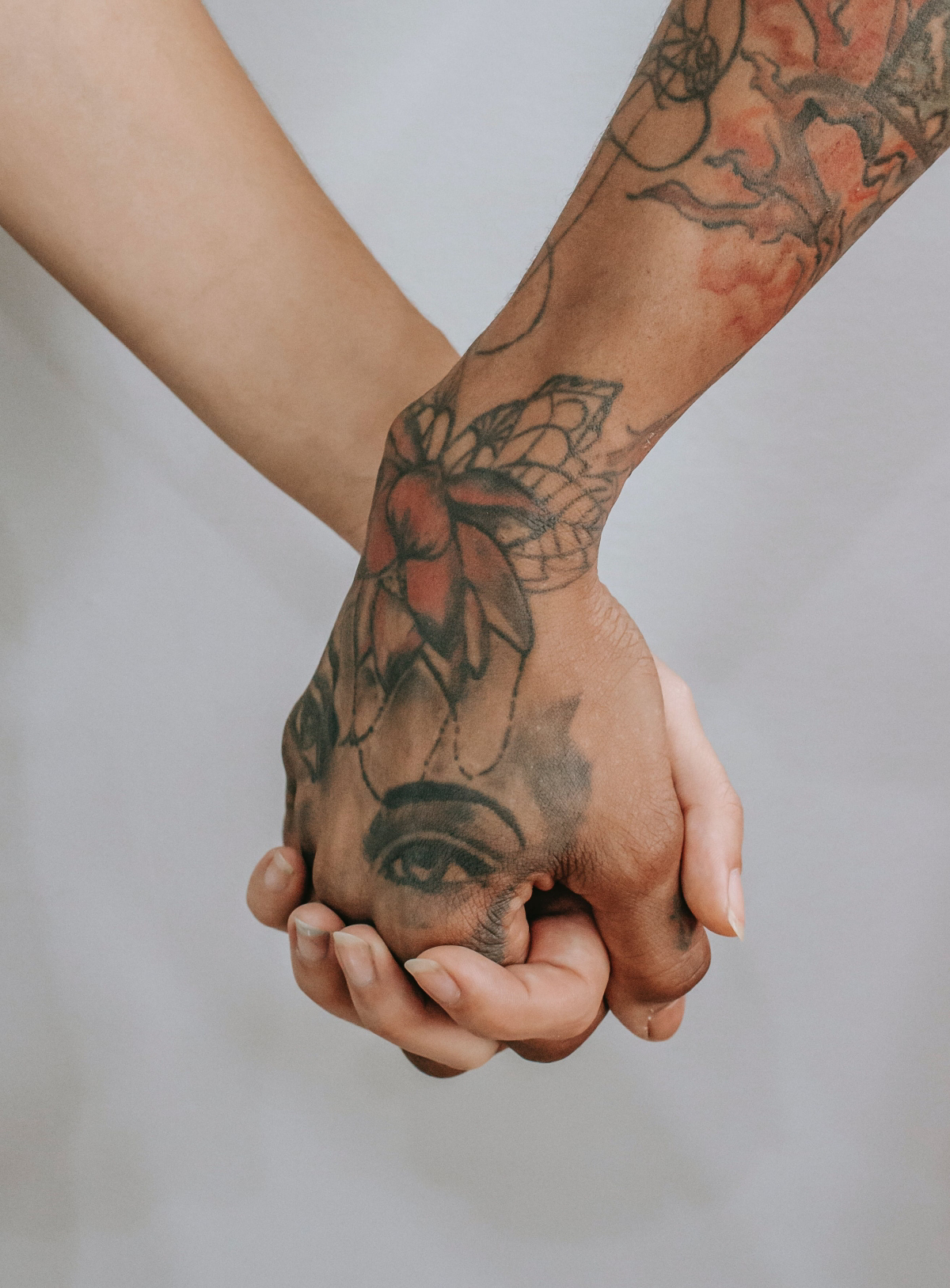
That Dreaded “Blowout”
The thin skin also cranks up the risk of something called a “blowout.” This happens when the needle goes a little too deep and the ink spreads out under the skin, creating a permanent, blurry, bruise-like halo around your lines. On a thicker area like a thigh, an artist has a wider margin for error. On the back of a hand, that margin is paper-thin. A tiny shift in pressure can be the difference between a crisp line and a fuzzy mess. This is why you should never, ever get a hand tattoo as your first tattoo, and you should only go to an artist who has a portfolio full of healed hand work.
How the Pros Tackle a Hand Tattoo
Given all those challenges, we have to approach hand tattoos with a completely different game plan. An artist who treats a hand like a forearm is setting you up for a tattoo that will look rough in a hurry.

For starters, we almost always adjust our machines and needles. I might run my machine a bit slower but move my hand a little faster to get the ink in cleanly on the first pass without overworking the skin. Chewing up the skin on a hand with multiple passes leads to a difficult heal, extra swelling, and ink loss. Needle choice is also key. For lines, a tight grouping of needles (like a 5 or 7 round liner) helps create a solid line without slicing up the delicate skin. For shading, we have to be extremely gentle. Solid black shading is tough to pull off; if it’s not packed perfectly, it heals patchy, and if it’s overworked, it scars. We often rely on techniques like stippling (dots) or whip shading that are much kinder to the skin.
Stretching the skin is also a non-negotiable skill here. The skin has to be pulled taut for the needle to deposit ink cleanly. For knuckles, I’ll have the client make a fist. For the top of the hand, I’ll bend their wrist down. It’s an active process for both of us, and it takes a lot of cooperation.
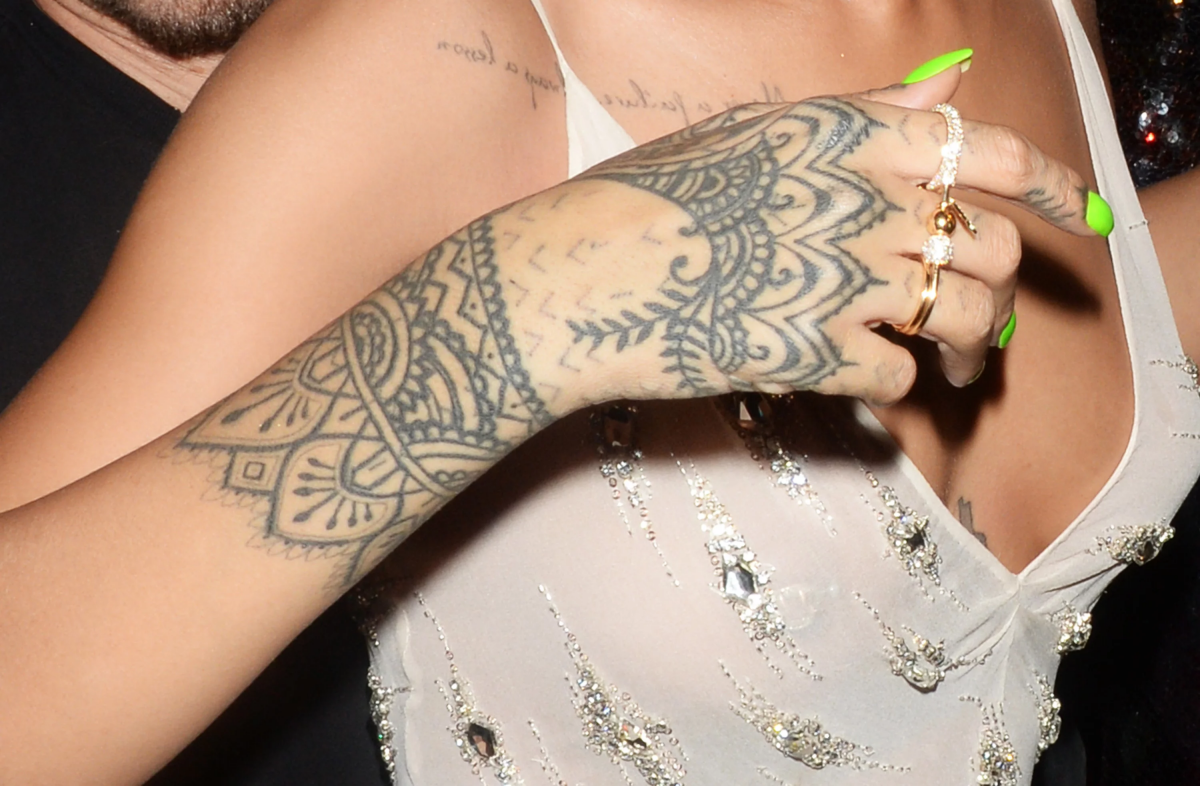
Design and Placement: The Keys to a Lasting Tattoo
Let’s be real: the single biggest factor in how your hand tattoo will look in ten years is the design you choose today. That delicate, single-needle script you saw on social media? It’s going to be a blurry little smudge. I have to be brutally honest with my clients about this.
Designs that work well on hands:
- American Traditional: This style is practically built for aging. It uses bold lines, solid black shading, and simple, clear images. These designs are made to be readable from a distance and will still look good even after the lines soften and spread a bit over the decades.
- Bold Geometric Stuff: Simple, strong shapes and patterns hold their structure incredibly well on the hand.
- Stylized, Bold Lettering: If you want words, you have to go big. Think single letters on each knuckle. That will last. A delicate cursive word on the side of your finger will not.
Designs to avoid on hands:
- Fine-Line and Micro Tattoos: The lines are just too thin. As the skin ages, they will either blow out or disappear completely.
- Photorealism or Portraits: The hand simply can’t hold the subtle detail required. It will blur into an unrecognizable blob.
- Watercolor Styles: This style often lacks black outlines and relies on soft blends of color. On a hand, this will fade into a faint, shapeless bruise very quickly.
Where You Put It Matters. A Lot.
Not all real estate on the hand is created equal. The placement is just as important as the design itself.
The top of the hand is the most common spot and a relatively good canvas. It holds ink well, but it’s bony and the pain is pretty significant, maybe a 7 out of 10. For longevity, it’s one of your best bets on the hand. On the other end of the spectrum is the palm. This is a specialist-only area. The skin is thick and calloused, making it incredibly difficult to get ink into and a nightmare to heal. The pain is easily a 10 out of 10, and even a perfectly done palm tattoo can fade dramatically. Many artists won’t even do them.

Then you have the fingers. Knuckles and the tops of fingers are very popular but tricky. The skin is constantly moving and tough, so tattoos here are prone to fading and blowouts. Pain here is a solid 8/10. For these spots, you need something incredibly simple and bold. Think of a 10-year-old traditional hand tattoo—see how the lines have thickened and settled? That’s what you’re aiming for. A fresh tattoo will have razor-sharp lines, but a well-done one that’s a year old will have settled in, looking solid and a little softer. By year 10, it’s part of you, with lines that have character and have spread slightly but are still perfectly clear.
And the side of the fingers? I usually advise against it. The skin regenerates so fast that the ink often gets pushed right out. They almost always need frequent touch-ups just to stay visible.
The Unfiltered Guide to Healing and Aftercare
I can’t stress this enough: the tattoo isn’t finished when you leave the studio. The most critical part has just begun, and the final result is almost entirely up to you. Your actions in the first two weeks make or break it.

A quick story: I once had a client, a chef, who got a beautiful traditional rose on his hand. He babied it for two weeks, followed every rule, and it healed perfectly. I had another client get a similar piece, but he went back to his construction job the next day and was careless with it, picking at the scabs. He came back a month later, and it was a patchy mess that needed a major rework. Your lifestyle and your discipline are everything here.
The First 48 Hours: Your Step-by-Step Guide
This is the critical window. Follow these steps religiously:
- The Wrap: Your artist will wrap your hand. Listen to their instructions. Usually, you’ll remove it after a few hours.
- The First Wash: Use a gentle, fragrance-free liquid soap. Lather it in your other hand, and gently pat the foam onto your new tattoo.
- Rinse and Dry: Rinse with lukewarm running water. DO NOT scrub. Pat it dry with a clean paper towel. Never use your cloth bath towel—it’s a playground for bacteria.
- Keep it Clean & Dry: For two days, your job is to keep it clean. That means no washing dishes (get a good pair of waterproof gloves if you must), no swimming, and trying to keep it elevated to reduce swelling.
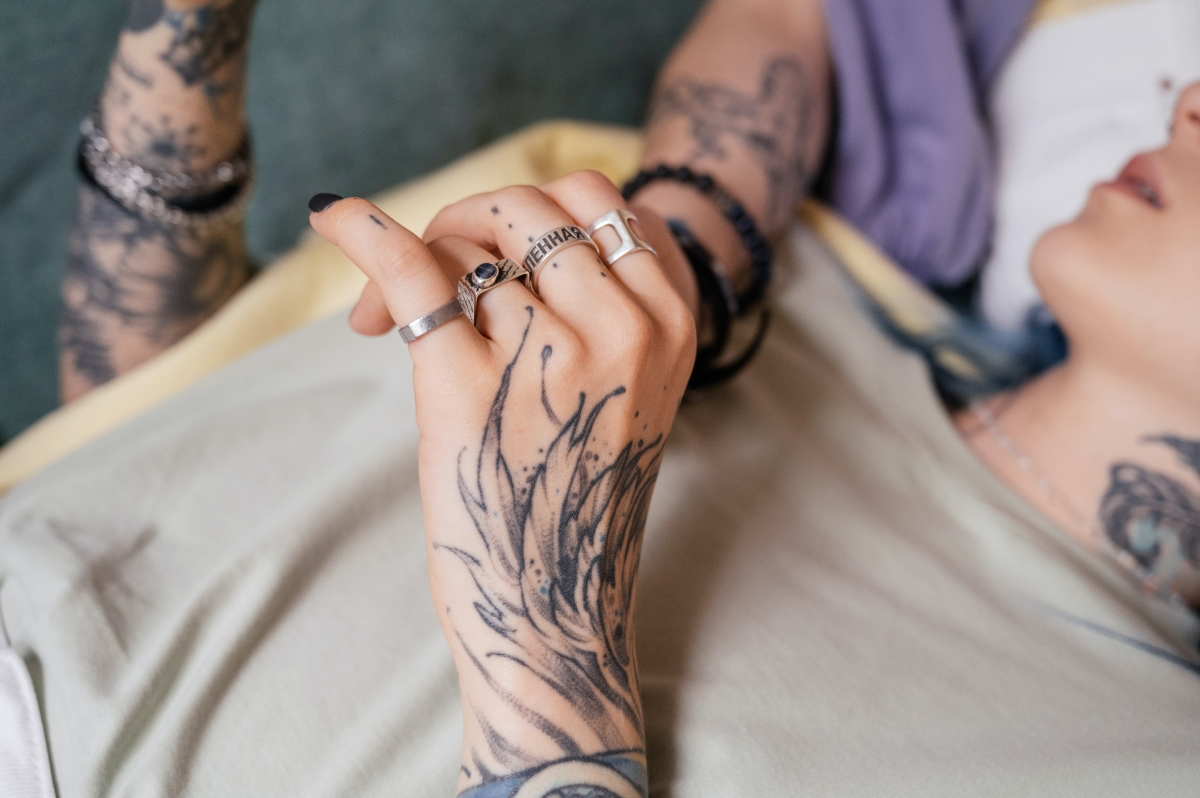
The Itchy Phase & The Aftercare Shopping List
After a couple of days, it’s time to moisturize. But you need to be careful—over-moisturizing is a common mistake that can suffocate the tattoo and mess up the healing. You only need a very, very thin layer.
Here’s a quick shopping list to get you started:
- Gentle Liquid Soap: Look for something like Dial Gold or Dr. Bronner’s Baby Unscented. You can find these at any drugstore for about $5.
- Aftercare Balm/Lotion: A&D or Aquaphor are classic choices, available for under $10. Tattoo-specific products like Hustle Butter are fantastic but might run you $15-$20 for a tub.
- High-SPF Sunscreen: This is for later, but it’s essential. Something like a Neutrogena Sheer Zinc is a great, non-greasy option for around $10.
Around day 3-5, your tattoo will start to peel and get insanely itchy. DO NOT SCRATCH IT. DO NOT PICK THE SCABS. Picking at it will pull the ink right out of your skin, leaving you with permanent blank spots. If it’s driving you crazy, you can gently slap it or apply another thin layer of lotion. This part is a true test of self-control.
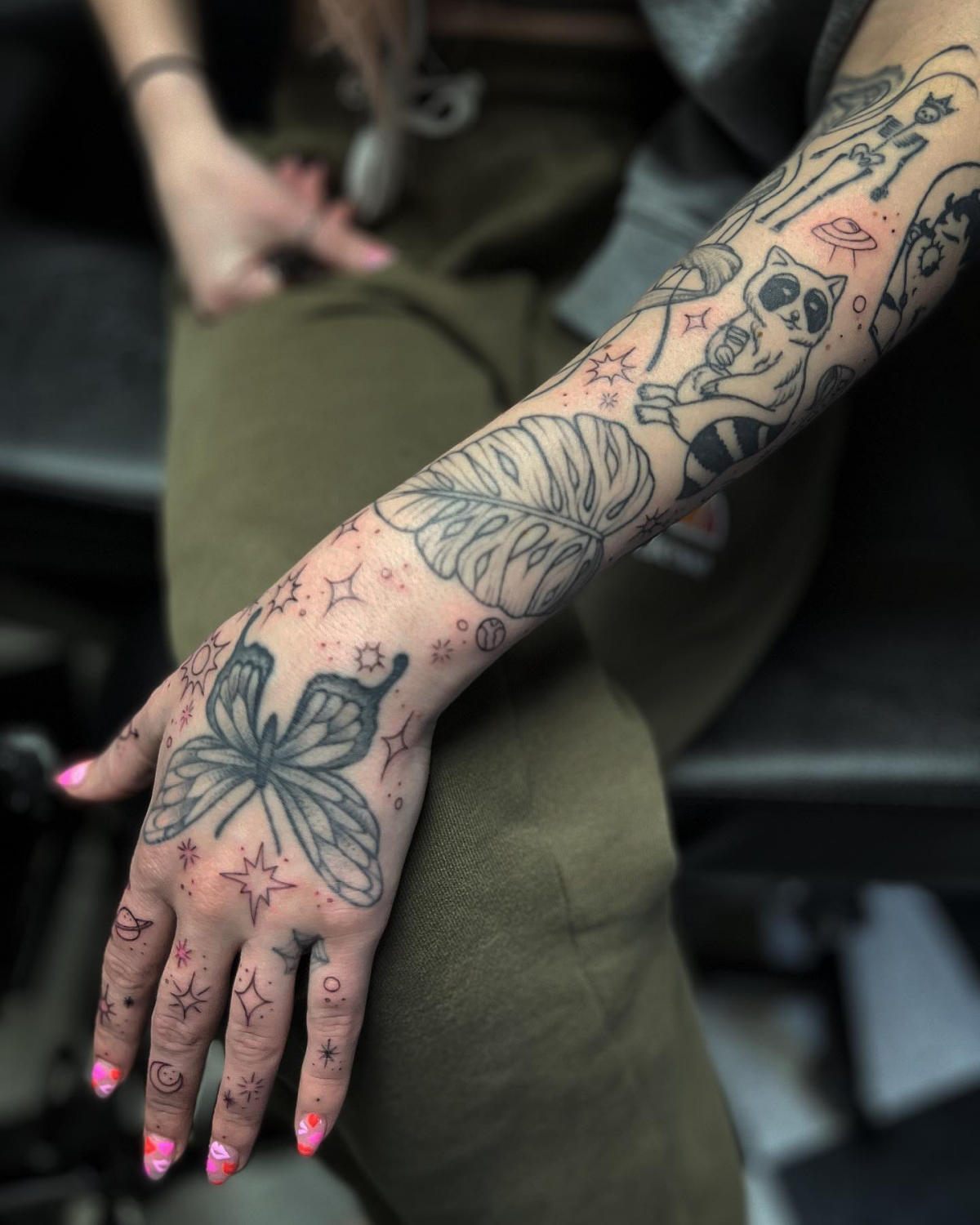
Healing with a Demanding Job
Heads up! If you work a job that’s tough on your hands—like a mechanic, chef, or healthcare worker who wears gloves all day—you need a solid plan. For the first few weeks, you have to be extra vigilant. If you wear gloves, make sure your hand is completely dry before putting them on, and wash it immediately after taking them off. Trapped moisture is the enemy. For jobs with dirt or chemicals, you have to protect the tattoo like it’s an open wound (because it is). This might mean taking a few days off or finding a way to work with one hand. It’s a pain, but it’s better than ruining a permanent piece of art.
The Practical Stuff: Money, Artists, and Long-Term Life
Okay, let’s talk about the things that can be awkward to ask about. First, the cost. Don’t price-shop for a hand tattoo. Because of the difficulty and risk involved, a good artist will charge a premium for hands. Expect to pay anywhere from $250 to over $600, depending on the artist’s experience, the design’s complexity, and your location. A cheap hand tattoo is a red flag.
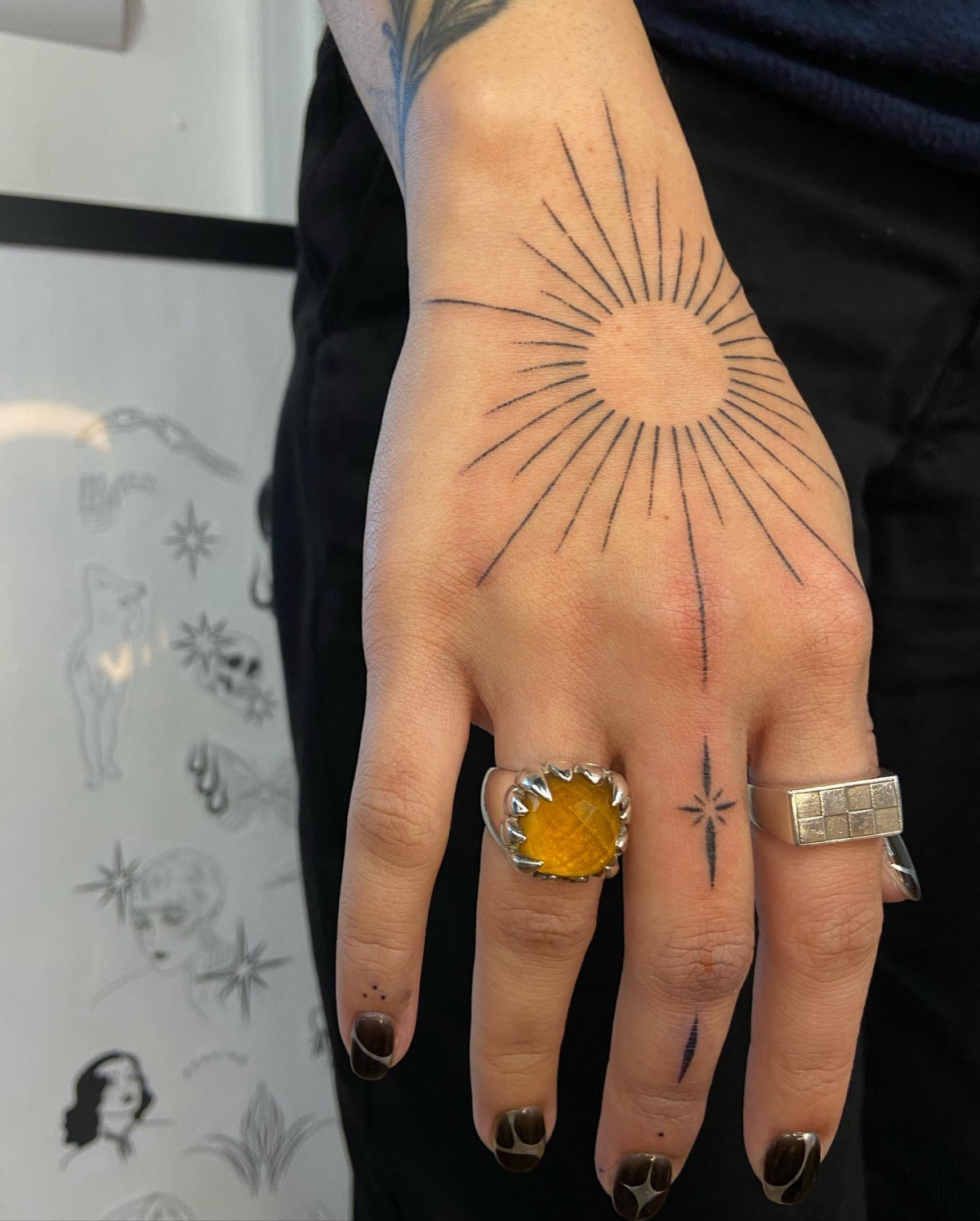
And what about touch-ups? Be prepared for them. I tell every client to expect that their hand tattoo will need a touch-up within the first year or two. Some artists include one free touch-up, but many have a separate policy for hands because they are so likely to need it. This isn’t the artist’s fault; it’s just the nature of the placement. Ask about their touch-up policy for hands before you book.
Finding the Right Artist Is Everything
When you’re looking for an artist, you need to be picky. Ask to see their portfolio, and specifically ask to see photos of HEALED hand tattoos that are at least a year old. Any artist can post a photo of a fresh tattoo that looks sharp. Only a skilled pro can create one that holds up. If an artist promises you a perfect, fine-line portrait on your finger that will last forever, walk away. They are either inexperienced or not being honest with you.
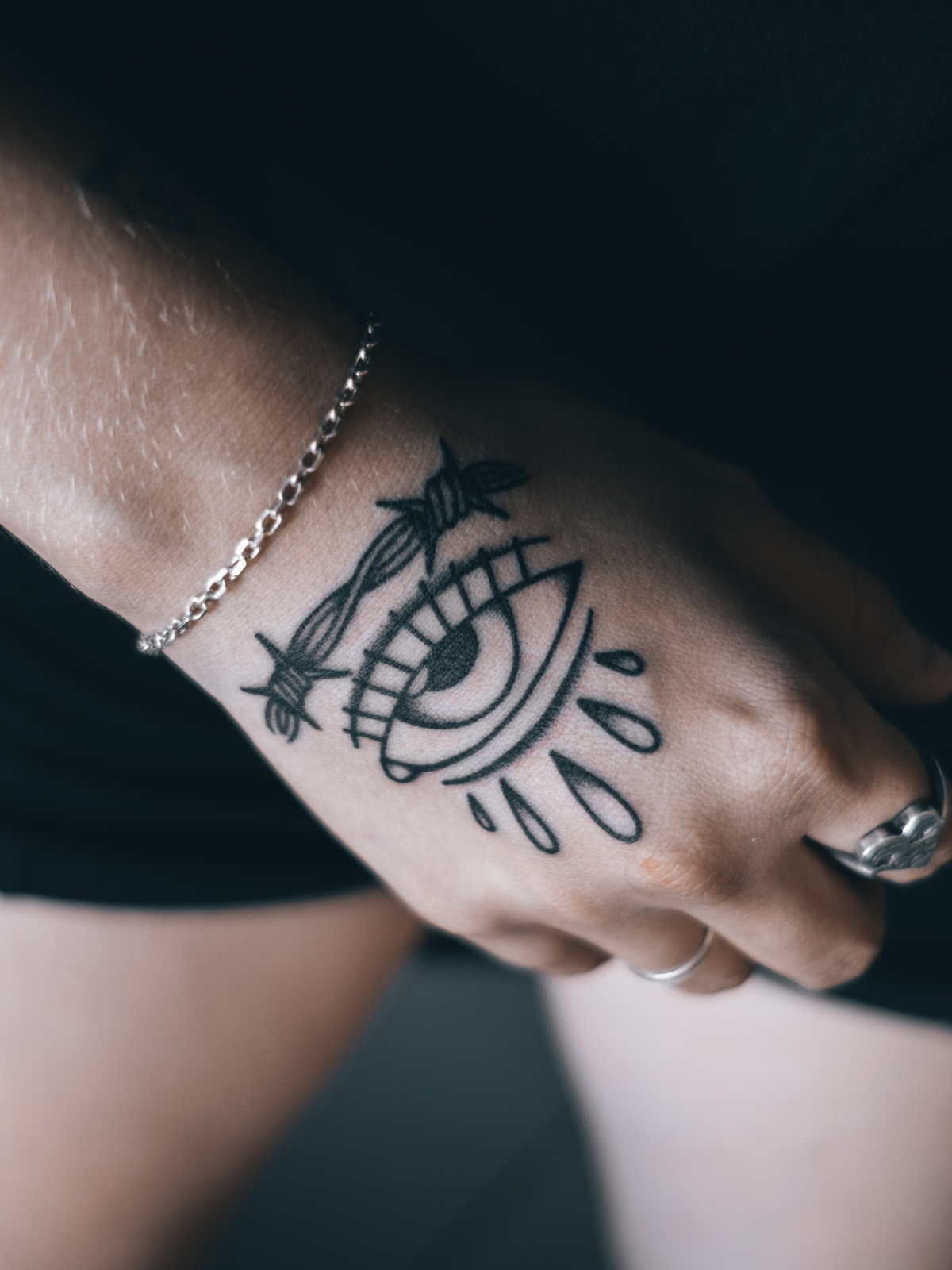
Finally, a little challenge for you. Try this: For one full week, make a point to put sunscreen on the back of your hands every single morning. If you find that little task annoying, you might not be ready for the lifelong commitment of protecting a hand tattoo. Just a thought!
Galerie d’inspiration
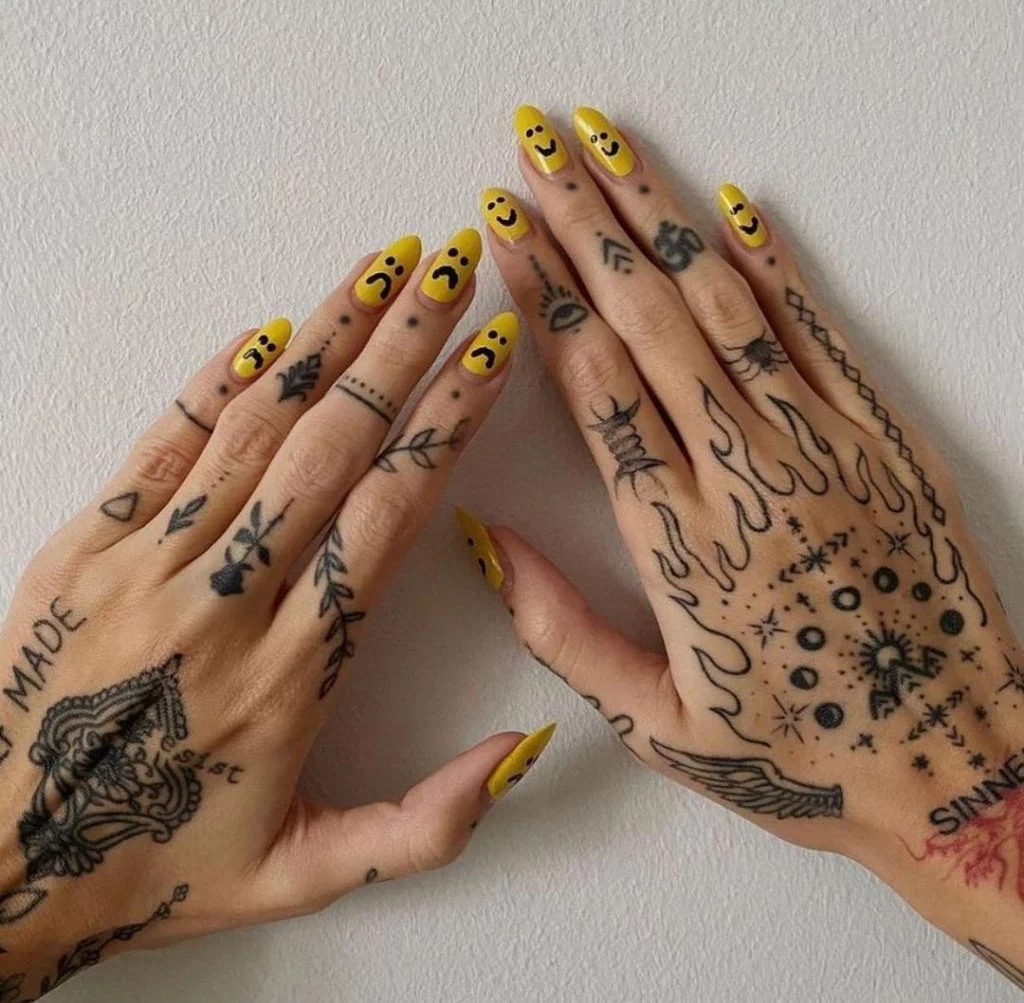

What does the healing process for a hand tattoo actually feel like?
Prepare for a unique experience. For the first 2-3 days, expect significant swelling—your hand might feel tight and look puffy. Then comes the peeling stage, which is more intense than on other body parts because of constant movement. Your beautiful design will look flaky and broken, but don’t panic and DO NOT pick at it. Resisting the urge to scratch is doubly hard on your hands. The final phase is the “silver skin” stage, where the healed tattoo looks shiny and slightly faded for a few weeks before the true colors settle in. Patience is everything.
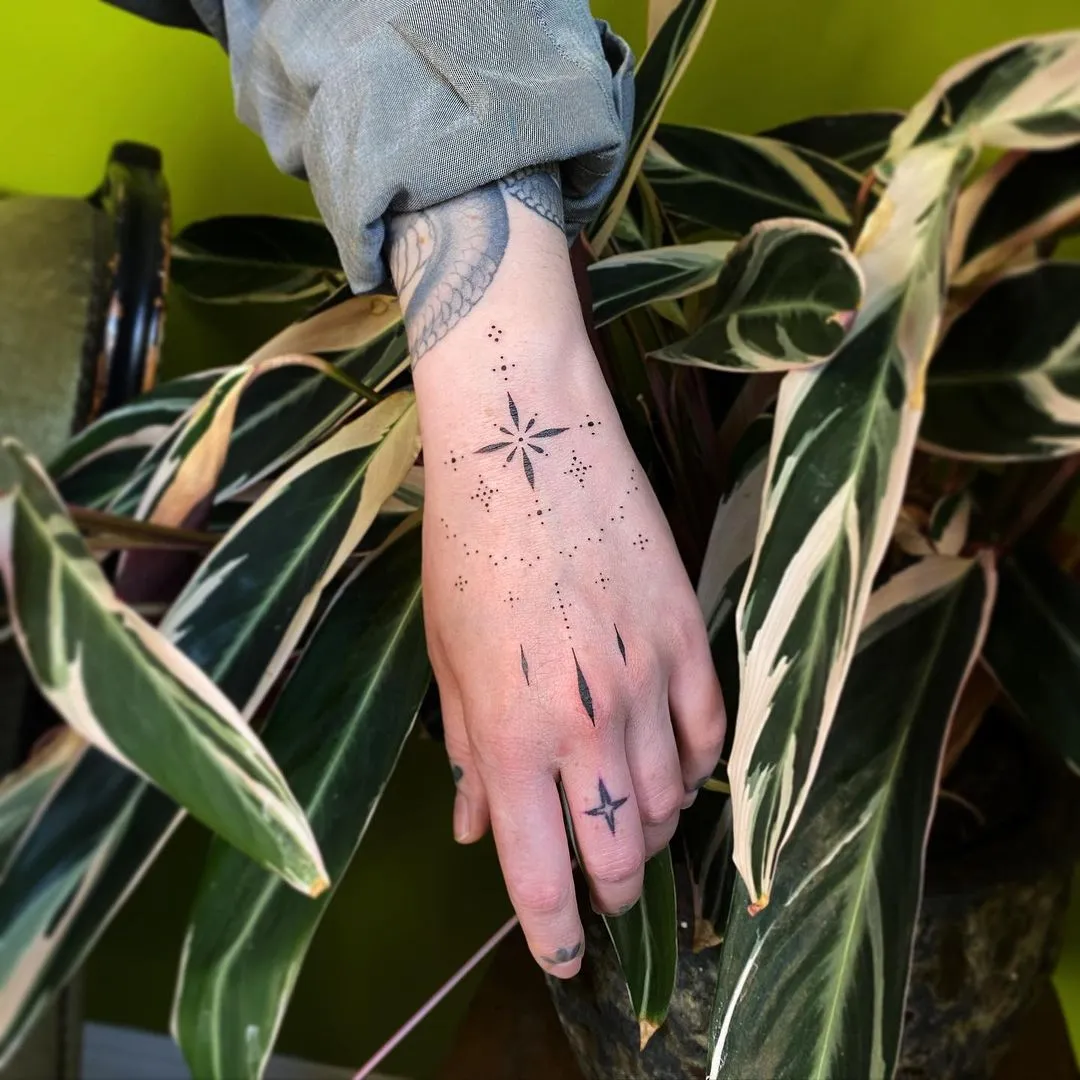
Nearly all hand tattoos will require a touch-up, often within the first two years.
This isn’t a sign of a bad artist; it’s the nature of the canvas. The constant use, washing, and sun exposure mean the ink fades faster. When you budget for your hand tattoo, mentally (and financially) plan for at least one follow-up session. Some artists include the first touch-up in their price, but many don’t, so be sure to ask about their specific policy for hands.

Fine Line Florals: Delicate, single-needle designs are hugely popular. They look incredibly elegant when fresh, but the thin skin and high movement of the hand can cause these fine lines to blur or fade out completely over a few years.
Bold Traditional: Think classic American Traditional with solid black outlines and packed color. These designs hold up significantly better on hands. The bold lines provide a strong foundation that withstands fading more effectively, ensuring your tattoo remains legible and vibrant for longer.
For longevity on your hands, bolder is almost always better.
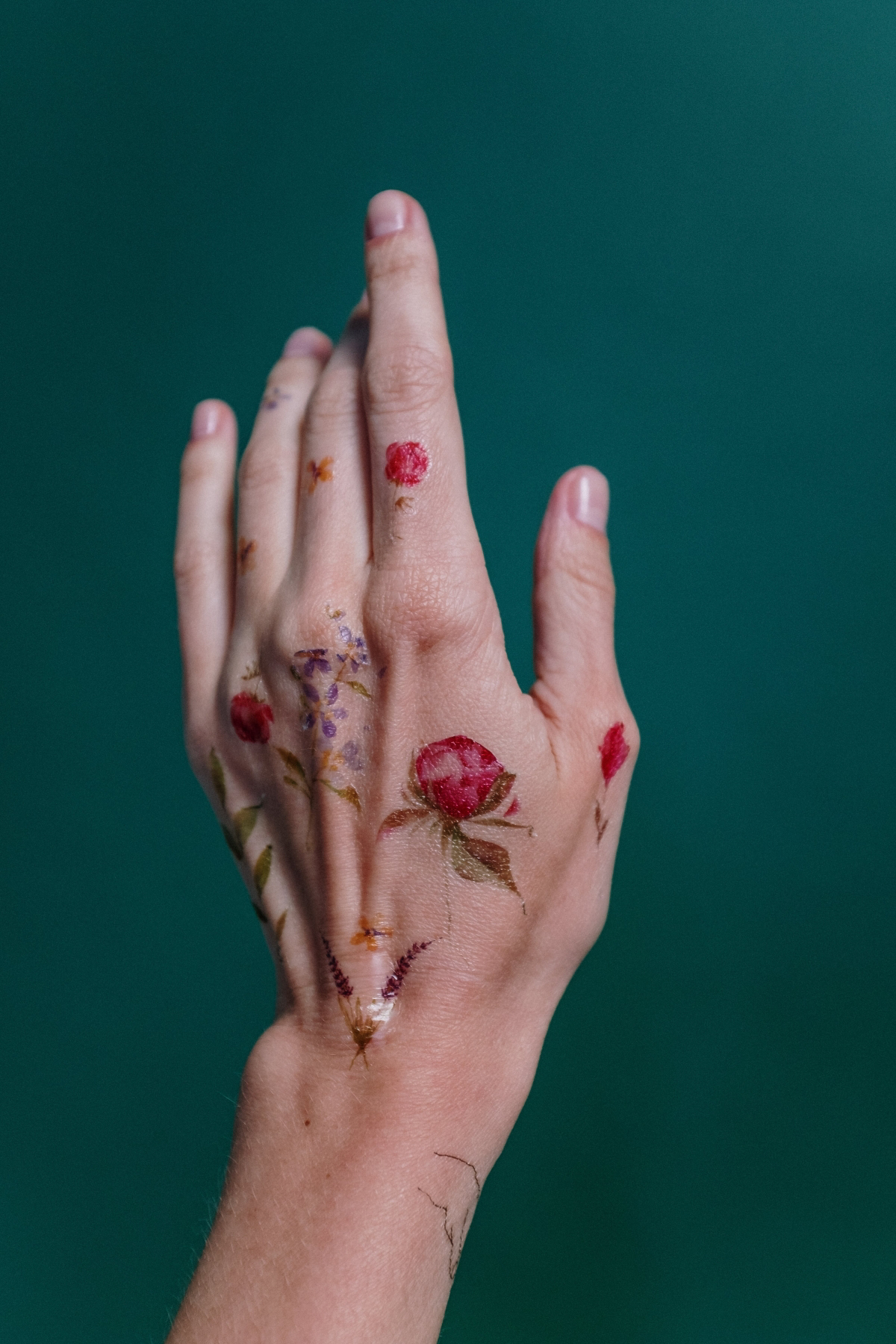
Your aftercare routine needs to be meticulous. The goal is to keep the area clean without overwashing or irritating the fragile, healing skin.
- Use a gentle, fragrance-free liquid soap, like Cetaphil or a dedicated tattoo wash like Hustle Bubbles. Avoid bar soaps, which can harbor bacteria.
- Pat the area dry with a clean paper towel. Regular towels can introduce lint and bacteria into the fresh tattoo.
- Once fully healed, applying a high-SPF sunscreen (SPF 50+) daily is non-negotiable to prevent premature fading.
Think beyond the top of the hand. The placement on the hand itself drastically affects longevity. The top of the hand is the most stable surface. Tattoos on the side of the hand, the palm, or especially the fingers are in constant high-friction zones. Ink on the side of a finger might look sharp for a month, but it’s notorious for falling out or blurring into an unreadable smudge within a year.

